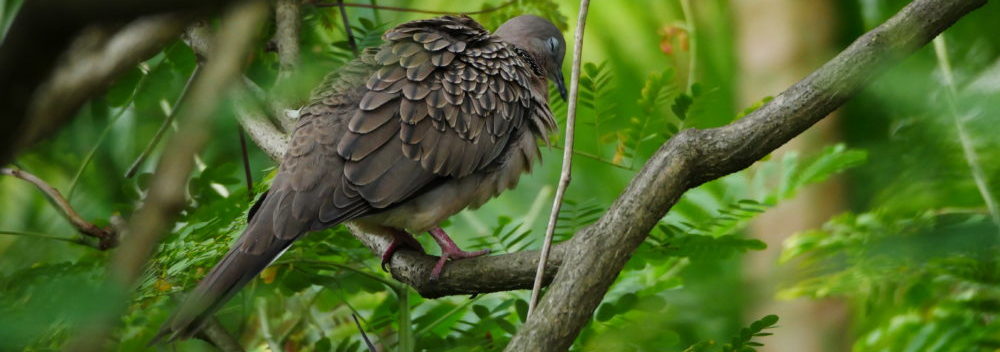
The placid wall on my West Garden has been a fascinating flora cliff, where the daily lives of inter-mingling plants … well, mingle. Here we have the Mexican Coral Vine or Antigonon leptopus, also commonly known also as the Honolulu creeper, an unyielding climber with beautiful pink bi-pedal petals with searching tentacular vines sprayed precariously amidst the leafy foliage of its principle protagonist on this wall, the Philondendron Pedalum. The latter, a five-leaflet hepta-lobe palmate is an unusually hardy creeper too, with beautiful yellow succulent flowers protected by a delicate white veil, and had itself lived through hard human pruning in the last two decades, only to battle against the Coral Vine.

I have often wondered if the struggle and zest for life in the jungle flora is underpinned by as much existential angst in the fight for life, compared to the higher or basal agonies that accompany the desperation of fauna-kind’s battles for tribal survival through the Ages.
Perhaps in the flora world, this is just a formulaic struggle, where the reactions and responses are coded into the DNA of plants through a series of tactile and hormonal responses, where the reflexes are jugular but insensate and emotionless?
Yet, in The Ecosystem of a Fallen Tree, Elaine Pascoe (2005) offers readers a simple and scientific answer to how there is flora life beyond death – where one fallen tree supports an entire community, which can include a wide variety of living organisms, including weasels, salamanders, millipedes, and fungi.
In an earlier scientific review (Tree Death as an Ecological Process: The causes, consequences, and variability of tree mortality, Bioscience, 1987) Jerry Franklin, H. Shugart, and Mark Harmon wrote that “the function of dead trees in the ecosystem has rarely received the consideration that it deserves. At the time a tree dies, it has only partially fulfilled its potential ecological function. In its dead form, a tree continues to play numerous roles as it influences surrounding organisms. Of course, the impact of the individual tree gradually fades as it is decomposed and its resources dispersed, but the woody structure may remain for centuries and influence habitat conditions for millennia.”

The article further point out that: “Although from an ecosystem perspective the tree is shifted from the category of living to dead matter, physiologically, some (even most) of a tree (e.g., the heartwood) could be considered dead much earlier and significant portions of a live tree may already have been decomposed. In alive conifer, only about ten percent of the cells are actually alive: the leaves (three percent), inner bark (phloem and cambium, five percent), and ray cells in sapwood (two percent). Some processes associated with dead trees begin while the tree is still alive.”
Like the great coniferous firs, the lives of competing creepers in the micro-ecosystem of my modest wall in the West Garden lived, and yet lives on, and will never be completely dead anymore; its life renews with the regularity of the tropical Monsoon seasons, even as the focus on the zeal for life is the most visible representation of my wall community.
G85 Lumix Olympus Zuiko 75-300 mm See also The West Garden on a Rain-soaked January Morning ; The West Garden on a Rain-soaked January Evening at Dusk ; Monsoon Flowers



